
The town is born vol.2 digital catalogue of the permanent exhibition
mart map- Let’s go on an adventure!
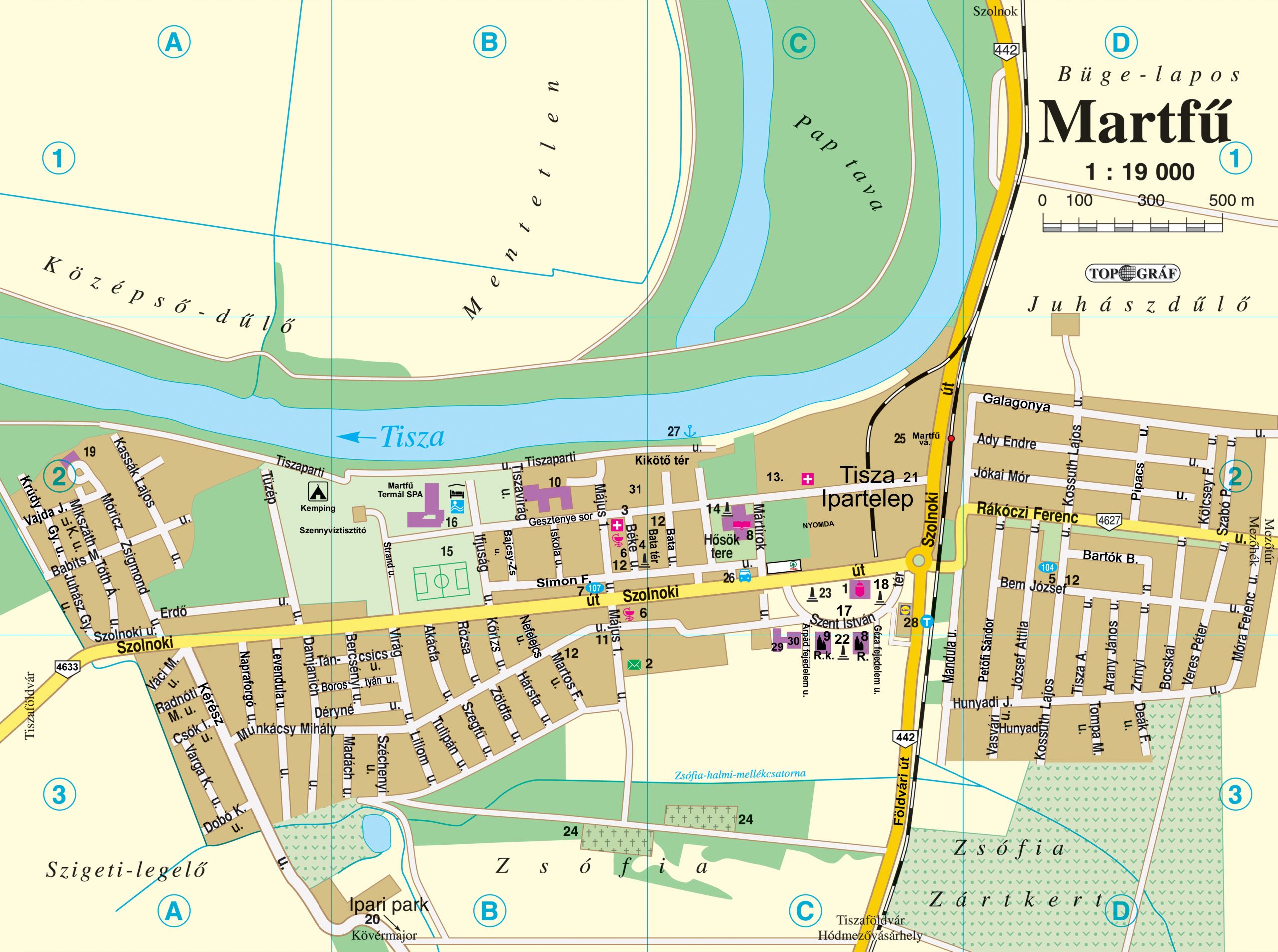
MARTFŰ TOWN CULTURAL CENTER AND LIBRARY
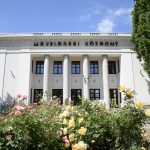
The Martfű Town Cultural Center and Library is the center of the the rich cultural life of Martfű. Originally built as the cultural center of the Tisza Shoe Factory, it opened in 1961 and since then it has been renovated, and is now welcoming visitors with modern spaces. The building houses the City Library, which has sections for children, adults, and professional literature. The theater hall, with more than 400 seats, hosts CineMartfű film screenings and regularly provides a stage for theater performances, stand-up comedy, educational lectures, and serves as a venue for commemorative events.
https://martfumuvhaz.hu/; https://konyvtar.martfumuvhaz.hu/; https://cinemartfu.hu/
The Cultural Center operates The Martfű Local History and Industrial Collection with a permanent exhibition showing the parallel development of the city and the shoe factory: A City is Born, vol.2. Through museum education activities and retro events, it promotes the history of the city and brings back the nostalgia of Tisza Shoes.
https://muzeum.martfumuvhaz.hu/ Contact: martfugyujtemeny@gmail.com
Ceramics Collection from the Great Plain by The Pécskői Family
Martfű, a young, modern industrial town, lacks folk houses and does not have strong ethnographic traditions. However, it is important to introduce the growing generations to traditional Hungarian folk lifestyles, furniture, and decorative motifs. The exhibition, organized under the care of the Cultural Center, has a collection of ceramics and folk utensils from the Great Plain gathered by the Pécskői family.
https://muzeum.martfumuvhaz.hu/pecskoi-gyujtemeny/
Address: 5435 Martfű, Mártírok út 1.
Contact: 0656450146, https://martfumuvhaz.hu/
BATA STATUE

In 1940, Jan Antonin Bat’a, the head of the Czech Bata company, started constructing a factory and a town in Martfű. The two-story shoe factory building, known as the A-plant, was constructed in a Bauhaus style following futuristic, functionalist design plans. Around the statue, the Bata housing estate consisted of one-story brick houses with running water and electricity. Although many of Bat’a’s ambitious plans—such as a tram system, airport, and port—were interrupted by World War II, he laid the foundation for the town’s evolution from a rural settlement to a town, shaping its modern look. The statue was created by Gyurcsek Ferenc, a sculptor awarded the Munkácsy Prize.
For more information, please visit the permanent exhibition at the Local History and Industrial Collection (Mártírok Street 1).
HANDCRAFT HOUSE
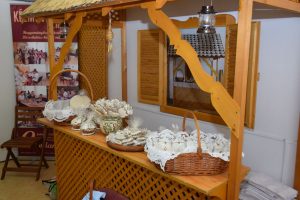
The Craft House in Martfű is an open gingerbread-making workshop, an activity room, and an exhibition of a traditional Tiszazug clean room, all in one place, at the same time. Since 2012, it has represented folk crafts in Martfű, bringing artisans together and promoting Hungarian traditions at events in cooperation with the Cultural Center. In addition to craft workshops and folk playhouses, there are also classes to deepen homeland and folklore knowledge. The building and its professional activities have earned it the title “Folk Craft Heritage Site.”
Once a labor center, the building’s exterior reflects a socialist realist style, but inside, a unique atmosphere with delightful aromas awaits visitors.
Head of professional activities: Juhászné Hidvégi Edit
Contact: www.csodamezes.hu, https://www.facebook.com/Csodamezes, 06306177460
A-PLANT
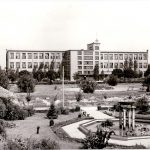
The first factory built on the Tisza Industrial Site, completed in 1942, is unique in Hungary but shares architectural similarities with numerous Bata factory buildings worldwide. This Bauhaus-style structure is supported by cylindrical concrete columns that hold the weight of the concrete rings, which allow large halls designed to accommodate the conveyor belts, or "circles," used in shoe production. The horizontal rows of windows provided natural light, which helps the work processes. Beneath the building lies an air raid shelter, used several times during the bombings in 1944. Once, the ground floor housed the cutting department, the first floor the stitching, and the second floor the assembly workshops (the shoe soles were attached to the upper part of the shoe). Today, the building serves as a storage facility.
For more information, please visit the permanent exhibition at the Local History and Industrial Collection (Mártírok Street 1).
REFORMED CHURCH OF MARTFŰ
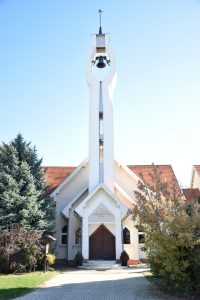
The building of the Reformed Church of Martfű was completed in 1996, and it was consecrated on July 27 the same year by Dr. Elemér Kocsis, the Reformed bishop. The church was designed by Ernő Kálmán, an architect from Debrecen. A remarkable feature of this modern architectural structure is the tower, shaped like hands lifted in prayer towards the heavens. The architect drew inspiration from the Bible, specifically from 1 Kings 8:22-23, where Solomon's temple dedication prayer reads: “Then Solomon stood before the altar of the LORD in front of the whole assembly of Israel, spread out his hands toward heaven and said, ‘LORD, the God of Israel, there is no God like you in heaven above or on earth below!’ Just as Solomon once lifted his hands in prayer, the church tower rises toward the sky.
Between these praying hands, a 430 kg bell has been placed, installed in the tower during a warm, friendly celebration on May 22, 1996. The bell was crafted by Miklós Gombos, a master bell-maker from Őrbottyán. In May 1995, a Swiss delegation of 30 members, led by Andreas Hess, president of the Swiss aid organization HEKS, visited and provided substantial support for continuing the work on the church. Their motto was: “Who builds, lives in hope.”
After entering through the prominent tower entrance, visitors step into a central sanctuary space. Opposite the entrance lies the church hall and balcony. Behind the pulpit, which faces the congregation, is the pastor’s office, which connects the two-story parsonage with the church. Another unique feature of the church is that, from a bird’s-eye view, the church hall and sanctuary form the shape of a cross. By now, the congregation has grown to over a hundred members, who actively participate in church life. Regular religious education is provided at the local primary school and in preschools. The church hosts not only sacred services but also cultural events.
The guiding verse of the congregation which the Holy Spirit imprinted on the flashly tablets of the heart of the Reformed members of Martfű is: “He will cover you with his feathers, and under his wings you will find refuge; his faithfulness will be your shield and armor.” (Psalm 91,4). The verse above the entrance, greeting all who enter, says: “ "And my house shall be a house of prayer." (Luke 19,46)
Address: Martfű, Szent István Square
Contact: Pastor László Tóth: +36306353693, martfu@reformatus.hu
ST. THOMAS CHURCH
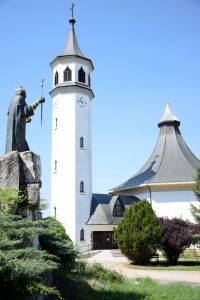
Thanks to the tireless efforts of Father József Tamási, construction of the new church began in 1991, designed by architect Gábor Marosi, with the cornerstone laid by Izidor Marosi, Bishop of Vác. The first masses in Martfű were held outdoors in 1993, within the unfinished, roofless walls of the structure.
The patron of the church is St. Thomas, the apostle who doubted Christ's resurrection and later suffered martyrdom in India, making him a worthy protector and role model for this young church community, in a town that had been without a church for over 50 years. The layout of the interior is based on the "Jerusalem Cross," symbolizing Christ’s five holy wounds, and has many unique elements.
Indian design motifs are visible throughout the church, including the pointed arches of the doors and windows, the “concrete curtains” on either side, the shape of the pulpit, sanctuary and altar. The dome with concave arches was crafted by skilled masters from Gyergyó, and Ferenc Takács painter adorned the wreath with cornflower vines.
The church is further adorned by stained glass windows by artist Attila Mohay and the copper sculptures by János Meszlényi, who was the first to use folded copper sheet sculptures in a Hungarian church. These include a crucified Jesus in the sanctuary, St. Thomas and St. John the Baptist in the side aisles, and the Holy Family at the entrance, with Mary holding Jesus at one side and Joseph on the other side.
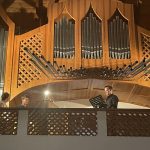 Finally, the “Queen of Instruments,” the church organ, was consecrated by Bishop Ferenc Keszthelyi of Vác during a pontifical mass. This 23-register, two-manual pedal organ, designed for playing a wide variety of organ music styles, was brought to life by architect Gábor Marosi, organ expert and designer József Kárpáti, and organ builders Gyula Vági and János Farkas. The excellent acoustics of the church makes this impressive organ ideal for concerts as well.
Finally, the “Queen of Instruments,” the church organ, was consecrated by Bishop Ferenc Keszthelyi of Vác during a pontifical mass. This 23-register, two-manual pedal organ, designed for playing a wide variety of organ music styles, was brought to life by architect Gábor Marosi, organ expert and designer József Kárpáti, and organ builders Gyula Vági and János Farkas. The excellent acoustics of the church makes this impressive organ ideal for concerts as well.
Address: Martfű, Szent István Square
ST. STEPHEN SQUARE AND TOWN HALL
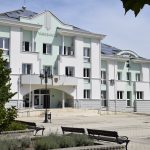
Martfű's young main square, St. Stephen Square, was developed after 1989 and it won the Hild Award. The city center, established on former cornfields, is home to our two churches, with the bronze statue of King St. Stephen standing between them. It was created by Munkácsy Prize-winning sculptor Ferenc Gyurcsek. Opposite the churches is the Town Hall, which was inaugurated in 1996.
The square is adorned with numerous sculptures, including István Martsa's statue of Tisza and Ferenc Gyurcsek’s the Time Gate, the 1848 memorial, and the Griffin statue, symbolizing the city's heraldic animal.
THE CASTLE
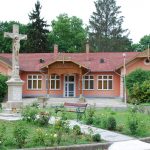
The Kastély is one of the oldest and most distinctive buildings in Martfű. This historical mansion, surrounded by a large ancient park, features a historicist architectural style enriched with romantic elements. It was built around the 1880s, the exact construction date of the Keszlerffy mansion remains unknown, yet it serves as an important landmark in the town. In the early 20th century, the mansion became the property of the Szobotka family, and Dezső Szobotka notably enhanced it by establishing a prosperous estate that included a dairy farm, milk processing facilities, and horse breeding. Before World War II, the shoe company Cikta Rt acquired the property, and it was nationalized in 1950. Later, it even operated as a hotel. Today, the Kövér Cross stands in front of the building, where once there was a fountain. The Kövér Cross commemorates another prominent landowning family of Martfű-puszta.
THE MANOR KÖVÉR
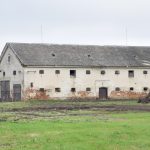
Today, only a granary remains to preserve the memory of the Kövér family’s former farmstead in Martfű. The Kövér family, who owned land not only near Tiszaföldvár but also in Martfű and Mezőhék, ran a highly developed agricultural operation. In surviving photographs, an American windmill can be seen above the farm buildings.
The family Kövér originates from Gyergyószentmiklós. One notable family member, Miklós Kövér, was a landowner and brickmaker who married the daughter of the Minister of the Interior. However, following his heart, he pursued a career in acting in Arad, adopting the name Mariházy after one of the family’s farmsteads in Martfű. He went on to have a distinguished career as the director of theaters in Szolnok, Kecskemét, and later in Kaposvár. His second wife was the famous actress Olga Turcsányi.
The area is now part of the southern industrial zone.
HOTEL
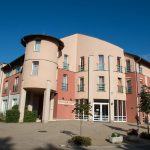
The three-star Martfű Thermal Spa hotel offers an all-rounded experience for those looking to relax, with three main functions: accommodation, spa, and dining. Hotel guests can enjoy the thermal bath, whose water was recently certified as medicinal, as well as a 33-meter long swimming pool. In addition to serving hotel guests, the restaurant welcomes Martfű residents and hosts events.
Address: Martfű, Ifjúság tér 2
Website: https://martfuspa.hu/
KEMPING
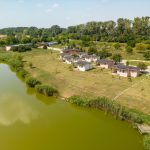
Cozy apartments, a campground, and a fishing lake await visitors in the camping area of the Thermal Spa. The former "Szabadidő Gödör" (Leisure Pit) was a popular gathering spot for work brigades, and during the first snowfall, it would fill with children sledding down the slopes.
Next to the lake, the Water Stage hosts the annual ÖrökZöld Tisza Festival, held as part of the August 20th celebrations.
TISZA SHORE – SHORE CAFÉ (– PART KÁVÉZÓ)
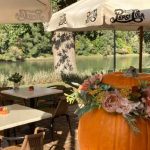
Martfű is located at the largest bend of the regulated Tisza River, on the riverbank (from which it got its name). The high riverbank has been home to numerous cultures since prehistoric times, but the modern town became an independent settlement only in 1950.
The Tisza and its floodplain are part of the Central Tisza Landscape Protection Area, rich in biodiversity, especially famous for the spectacular emergence of mayflies in the summer.
At the Shore Café, which has a garden with special atmosphere and hosts various events, visitors can stroll down to the riverbank with their drinks to enjoy the beauty of the landscape and the soothing presence of nature.
Contact: https://www.facebook.com/partkavezo
CONTACT:

Local and Industrial Collection
Address: 5435 Martfű, Mártírok út 1
Phone.: (56) 450 146
E-mail: martfugyujtemeny@gmail.com
facebook: Martfű Városi Művelődési Központ
OPENING HOURS:
Monday to Friday: 8.00-17.00
Advance registration is required on weekends.
For groups, it is also possible to visit our exhibition at other times.
Copyright 2024 Martfűi Hely- és Ipartörténeti Gyűjtemény – Edited by: HG WEB Kft.